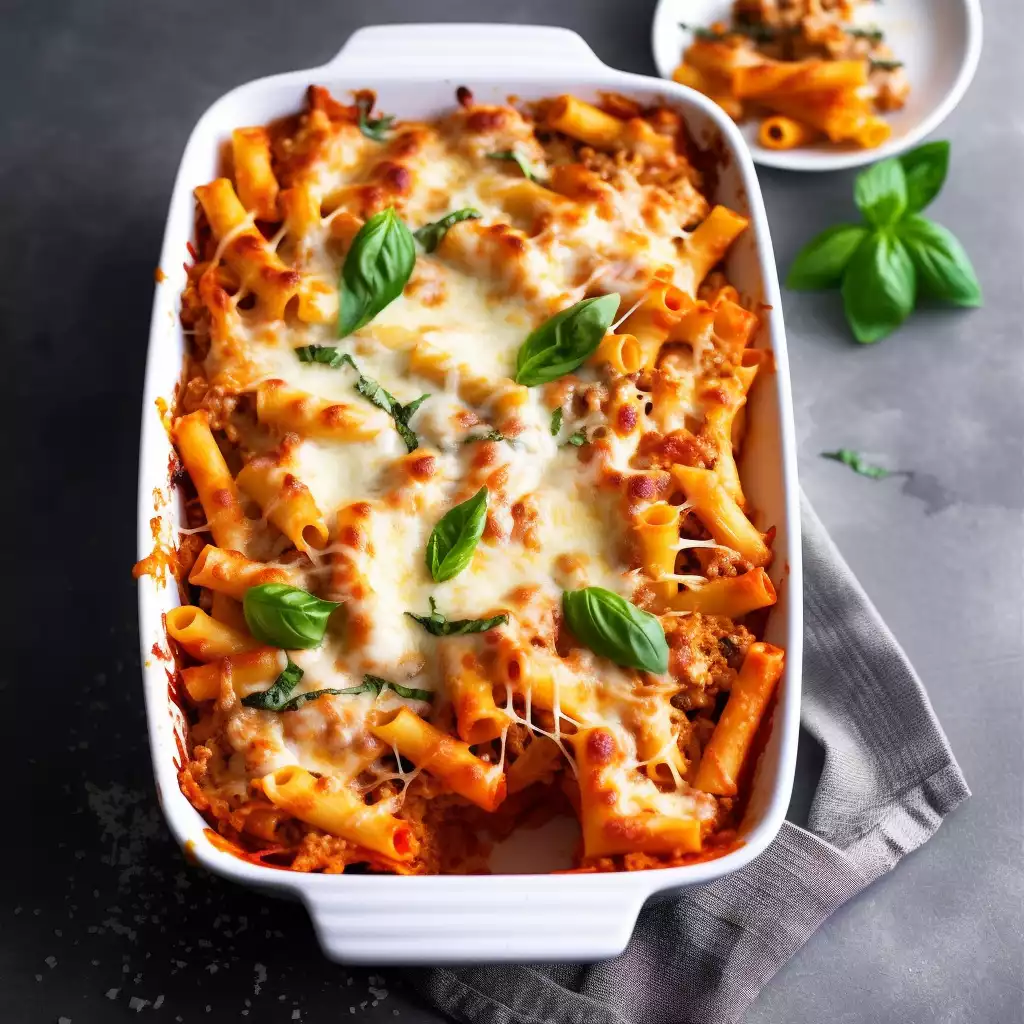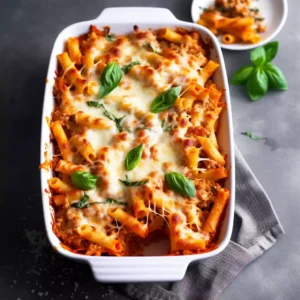
Baked ziti is a comforting classic that never fails to satisfy cravings for hearty, cheesy goodness. Originating from Italian-American kitchens, this dish has become a staple on family dinner tables and potluck gatherings alike.
Despite its indulgent flavors, baked ziti is surprisingly simple to prepare, making it an ideal choice for both novice and experienced cooks.
With a perfect balance of pasta, rich tomato sauce, and creamy cheeses, baked ziti promises a deliciously comforting meal that will have everyone coming back for seconds.
Expert Tip: Experiment with different cheese combinations for a unique twist on this classic dish. Fontina, provolone, or asiago can be delicious substitutes or additions to the traditional cheeses.
Pasta Ziti: This pasta ziti provides the perfect shape and texture to hold onto the rich sauce and cheeses.
Tomato Sauce: Canned tomato sauce forms the flavorful base of the dish, infusing every bite with savory goodness.
Ricotta Cheese: Creamy ricotta cheese adds richness and depth to the dish, creating a luscious filling that complements the pasta perfectly.
Mozzarella Cheese: Shredded mozzarella cheese melts into gooey strands of cheesy goodness, adding irresistible stretch and flavor.
Parmesan Cheese: Grated Parmesan cheese delivers a nutty, salty kick that enhances the overall taste of the baked ziti.
Oregano and Basil (Dried): These aromatic herbs bring a burst of Mediterranean flavor to the dish, elevating its taste profile with their savory notes.
Garlic Powder: Adding a hint of garlic powder infuses the dish with subtle yet impactful garlic flavor, enhancing its depth.
Salt and Black Pepper: To taste, salt and black pepper round out the flavors, ensuring a well-seasoned dish.
Basil Leaves (Fresh, optional): Fresh basil leaves make for a vibrant and fragrant garnish, adding a pop of color and freshness to the finished dish.
Expert Tip: Don’t overcook the pasta before baking, as it will continue to cook in the oven. Cook until just al dente to avoid mushy ziti.
Expert Tip: For extra flavor, you can add cooked ground beef or sausage to the tomato sauce mixture before combining with the pasta.
Fresh basil leaves add a delightful freshness to the dish, but they are optional. You can skip them if you don’t have any on hand.
Yes, you can assemble the dish ahead of time and refrigerate it until ready to bake. Just be sure to increase the baking time slightly if baking it directly from the refrigerator.
While ziti is traditional for this dish, you can certainly experiment with other tube-shaped pastas like penne or rigatoni if that’s what you have available.
The cheese should be bubbly and golden brown on top, and the edges of the dish should be slightly crispy. You can also insert a knife into the center – if it comes out hot and the pasta is tender, it’s ready.
Yes, baked ziti freezes well. Allow it to cool completely, then transfer individual portions to freezer-safe containers or wrap tightly in aluminum foil. Freeze for up to 3 months. To reheat, thaw overnight in the refrigerator and then bake in a preheated oven until heated through.
Here are some more recipes for you to enjoy! If you my recipes don’t forget to rate and leave a comment.
If you have any recipe suggestions, please do not hesitate to ask me. A great way to stay in contact with me is through Instagram, Facebook, Twitter and YouTube. Don’t forget to tag me @CookwithNabeela in your recipe photos!

Subscribe now to receive my latest recipes directly in your inbox. Stay up-to-date and never miss out!

I love to cook! I want to share with you my favourite, delicious family-friendly recipes. I want to inspire you to create fantastic food for your family every day.
Add your first comment to this post